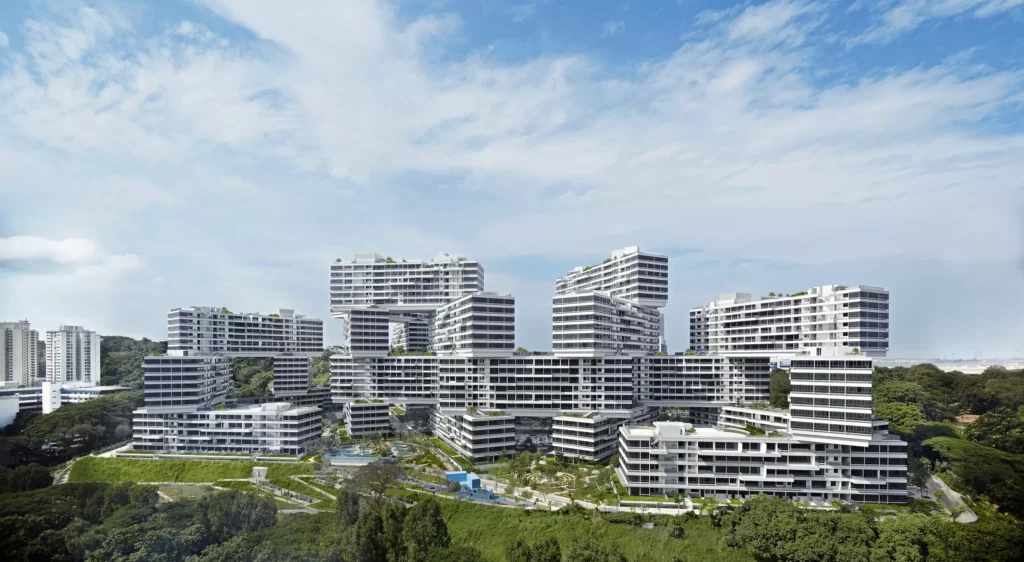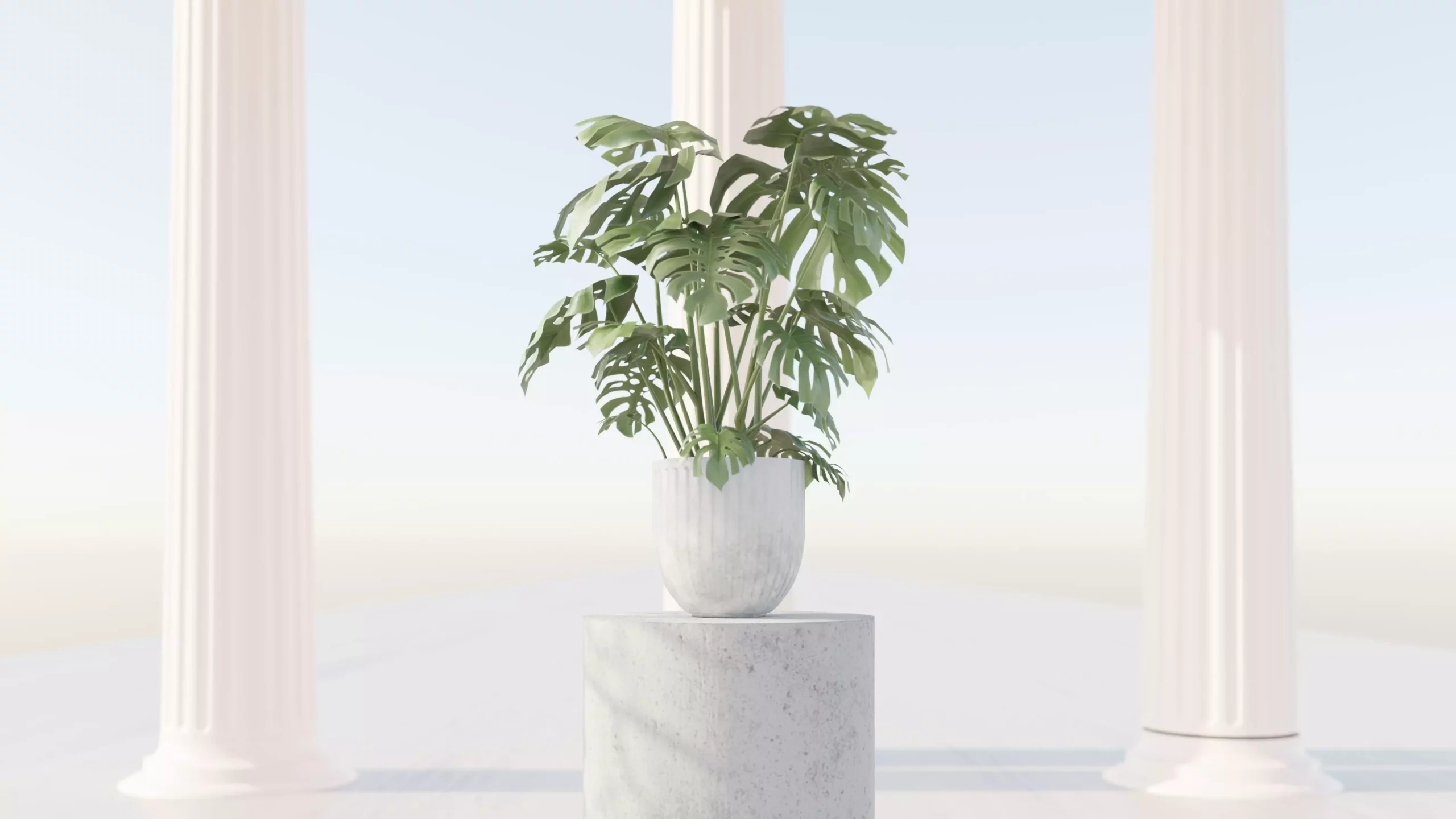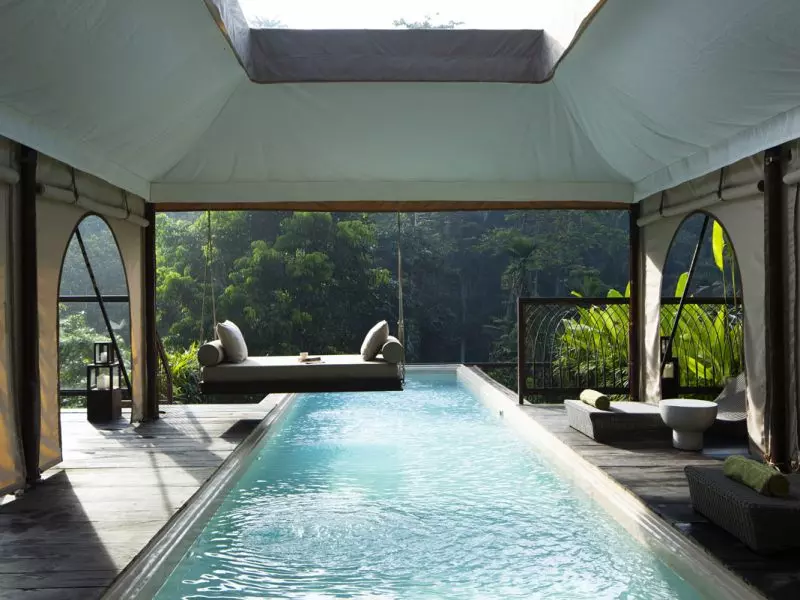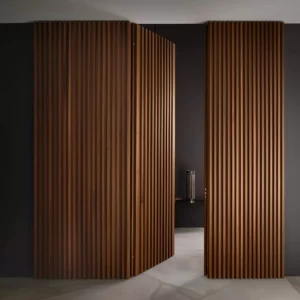What is biophilic design?
First, it is important to understand that biophilic design is based on the idea that humans are innately connected to nature. As modern life has become increasingly urban and technological, we have moved further and further away from this natural connection. Biophilic interior design seeks to restore this connection through the use of natural elements in interior design.
One of the most effective ways to incorporate biophilic design into your home or office is through the incorporation of greenery. Plants not only improve air quality, but also help reduce stress and increase a sense of well-being. Incorporating potted plants in different sizes and types can help create a green and relaxing environment. If space permits, you can also incorporate vertical gardens or even a small vegetable garden at home.
Natural light is also an important element in biophilic design. It is important to try to maximize the amount of natural light entering the space by using large windows, skylights and other elements that allow natural light to enter. If it is not possible to incorporate large windows, mirrors or reflective elements can be used to reflect natural light into the space.
Natural materials are also an important part of biophilic design. Materials such as wood, stone, ceramics and glass can be used to create a warm and inviting atmosphere. These materials not only provide a natural feel, but also help to improve the acoustics of the space.
In addition to the elements mentioned above, it is also important to consider how the space is organized. Biophilic design is based on the idea that spaces should be fluid and natural, rather than rigidly and artificially organized.
Of course, biophilic design is also characterized by the creation of spaces that integrate with nature and do not feel like an artificial extension of it. For example, patios, terraces and gardens can be used to create a smooth transition between indoors and outdoors, helping to enhance the feeling of connection with nature.
In addition, biophilic design also promotes the creation of versatile spaces that adapt to different needs and activities. An example of this is the creation of work and rest areas in the same space, through the use of furniture and accessories that can be easily rearranged.
Another important aspect of biophilic design is the incorporation of elements that promote creativity and productivity. For example, you can use colors and shapes that inspire creativity, or create workspaces with views of nature to help improve focus and concentration.
As for natural materials, they are not only those mentioned above, but also elements such as wool, cotton, linen or hemp can be used to create a warm and cozy atmosphere.
In short, biophilic design seeks to restore humans' natural connection to nature by incorporating natural elements into interior design. By incorporating plants, natural light, natural materials and spaces that integrate with nature, an environment can be created that promotes wellness, creativity and productivity.
The biophilic design can be used in a variety of spaces, including:
- Residential spaces: Biophilic design can be applied to houses, apartments and any type of dwelling. For example, patios, terraces and gardens can be incorporated inside the house to create a smooth transition between indoors and outdoors. Plants and natural elements can also be used in rooms to create a warm and cozy atmosphere.
- Commercial spaces: Biophilic design can also be applied in stores, restaurants, hotels and other commercial spaces. For example, plants and natural elements can be used in shop windows and inside the store to attract customers and create a warm and welcoming atmosphere. In restaurants, vertical gardens, patios and terraces can be created so that food can be enjoyed in the open air and surrounded by nature.
- Workspaces: Biophilic design can also be applied in offices, factories and other workspaces. For example, plants and natural elements can be used inside the office to improve employee well-being and increase productivity. Work and rest areas can also be created in the same space, using furniture and accessories that can be easily rearranged.
- Public spaces: Biophilic design can also be applied in parks, squares, gardens and other public spaces. For example, plants and natural elements can be used to create a pleasant and relaxing environment, and green spaces can be created to promote interaction with nature and people's well-being.
Here are some concrete examples of how biophilic design can be applied in different spaces:
- In a home: A vertical garden can be incorporated into a living room wall, potted plants can be placed in different parts of the house, natural wood floors and ceilings can be used, large windows and doors can be placed to take advantage of natural light, and outdoor relaxation and lounging areas can be created on terraces and patios.
- In a hotel: Plants and trees can be placed inside the rooms and in common areas, gardens and green areas can be created around the swimming pool, natural materials such as wood and stone can be used in the decoration, elements reminiscent of nature such as waterfalls, fountains and ponds can be included, and outdoor activities such as hiking, yoga, among others, can be offered.
- In an office building: Potted plants can be placed on desks, green areas can be created on the rooftop or in the garden, large windows and doors can be included to take advantage of natural light, natural materials such as wood can be used in furniture, and outdoor seating areas can be created for employees.
- In a public park: Nature walking trails can be created, outdoor benches and picnic tables can be placed, playgrounds can be created for children that are in contact with nature, fountains and fish ponds can be included, and outdoor activities such as yoga, hiking and educational workshops can be offered.
These are just some examples of how biophilic design can be applied in different spaces, but there are many other ways in which nature can be incorporated into the design and decoration of spaces. The important thing is to find the right way to do it in each case and take advantage of all the benefits that nature can provide for the welfare and health of people.
Biophilic design success stories
An example of a residential project that has been designed with a biophilic design is "The Interlace" project in Singapore. This residential complex consists of 31 buildings with a total of 1,040 apartments and has numerous biophilic features, such as:
- A large vertical garden covering 80% of the building.
- A natural cross ventilation system that allows fresh air to enter and warm air to escape.
- A rainwater harvesting system and an irrigation system for the plants.
- A large number of private terraces and patios for each apartment, overlooking the vertical garden.
- The incorporation of natural elements in the decoration, such as wood and stone.
- The creation of outdoor relaxation and rest areas, such as a swimming pool and a park.
- The inclusion of a large number of plants and trees throughout the residential complex.

An example of a project in the hotel sector that has been designed with a biophilic design is the hotel "The Naked Retreats" in Bali, Indonesia. This hotel has several biophilic features, such as:
- The incorporation of natural elements in the design of the rooms, such as wood and stone.
- The creation of a large tropical garden and an outdoor swimming pool.
- The use of local and sustainable materials in the construction of the hotel.
- The inclusion of a large number of plants and trees throughout the hotel.
- Promotion of outdoor activities and connection with nature, such as yoga and hiking.
- The promotion of healthy eating with organic and seasonal products.
In retail, an example of a biophilic project is "The Greenbelt" shopping mall in Manila, Philippines. This mall has several biophilic features ( I attach a video so you can see it), such as:
- The creation of a large indoor garden with a variety of plants and trees.
- The incorporation of natural elements in store design, such as wood and stone.
- The use of natural light and cross ventilation.
- The inclusion of a large number of green areas and outdoor spaces for clients.
- The promotion of sustainable and environmentally friendly products in stores.
We can see that in both examples biophilic design can be used in different sectors, and how the connection with nature is sought at all times to promote the well-being of the people who visit or inhabit them.
In short, biophilic design can be used in a variety of spaces, from homes and commercial spaces to offices and public spaces. The goal is to incorporate natural elements into design to restore the connection between humans and nature, and promote well-being and productivity.
If you want to know more about what we do in Lobo Studio I attach our Instagram profile and there you can view all our latest projects.
If you are looking for a rendering company to visualize your project I invite you to contact us to explain your project 🙂
See you next time!







